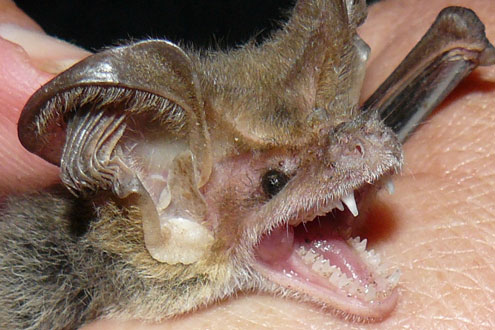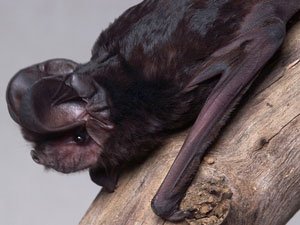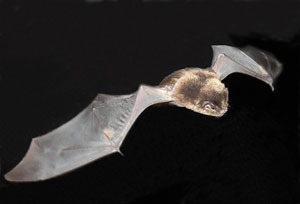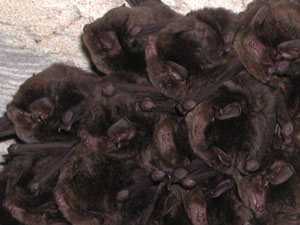However, bats are a very important part of the local ecology, with 22 species living in the Greater Blue Mountains area – they are the most diverse of all mammalian groups and make up more than a third of all native mammal species. Seven of these bats are listed as threatened in NSW.
Small microbats can often be seen at dusk on the edge of the bush and around street lights, fluttering about to catch tiny insects on the wing. Have a look tonight!
Bats (order Chiroptera) have been classified into two groups: microbats (suborder Microchiroptera) and megabats (suborder Megachiroptera).Microbats are insectivorous and use echolocation to ‘see’ in the dark, navigate their environment and to hunt for food. Because they are so small, they need sheltered places to roost and keep warm, such as caves, tree hollows, under bark and rock crevices.
The Blue Mountains provide excellent habitat for many insectivorous bat species, with large expanses of undisturbed forest for roosting and foraging. The many sandstone cliffs provide a multitude of cracks and crevices for bats such as the rare Large-eared Pied Bat (Chalinolobus dwyeri)).The limestone areas within the region, such as Jenolan Caves and Colong Caves also provide essential microhabitat for the Eastern Bent-winged Bat (Miniopterus orianae oceanensis) and the Eastern Horseshoe Bat (Rhinolophus megaphyllus).
The early history of coal mining in the region has also provided excellent habitat in the now abandoned mines and tunnels
Megabats include the Flying Foxes which are herbivorous and mostly navigate by eyesight rather than echolocation. The Flying foxes usually live in large, tree-roosting colonies and help regenerate our forests and keep ecosystems healthy through pollination and seed dispersal of native fruits such as Blueberry Ash and Lillypilly as well as being a major pollinator of Eucalypts
The 22 bat species found within the Greater Blue Mountains:
Little Red Flying-fox (Pteropus scapulatus)
White-striped free-tailed bat (Austronomus australis)
Large-eared pied bat* (Chalinolobus dwyeri)
Gould’s wattled bat (Chalinolobus gouldii)
Chocolate wattled bat (Chalinolobus morio)
Eastern false pipistrelle* (Falsistrellus tasmaniensis)
East-coast free-tailed bat* (Micronomus norfolkensis)
Little bent-winged bat (Miniopterus australis)
Eastern bent-winged bat (Miniopterus orianae oceanensis)
Large-footed myotis* (Myotis macropus)
Gould’s long-eared bat (Nyctophilus gouldi)
Eastern Free-tailed bat (Ozimops ridei)
Eastern Horseshoe Bat (Rhinolophus megaphyllus)
Yellow-bellied Sheath-tailed bat (Saccolaimus flaviventris)
Greater broad-nosed bat (Scoteanax rueppellii)
Eastern broad-nosed bat (Scotorepens orion)
Large forest bat (Vespadelus darlingtoni)
Eastern forest bat (Vespadelus pumilus)
Southern forest bat (Vespadelus regulus)
Little forest bat (Vespadelus vulturnus)
Bats are protected under the Biodiversity Conservation Act 2016.
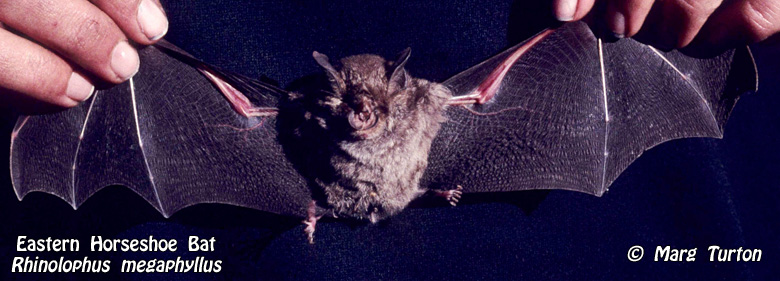 Eastern Horseshoe Bat Rhinolophus megaphyllus (Marg Turton)
Eastern Horseshoe Bat Rhinolophus megaphyllus (Marg Turton)

